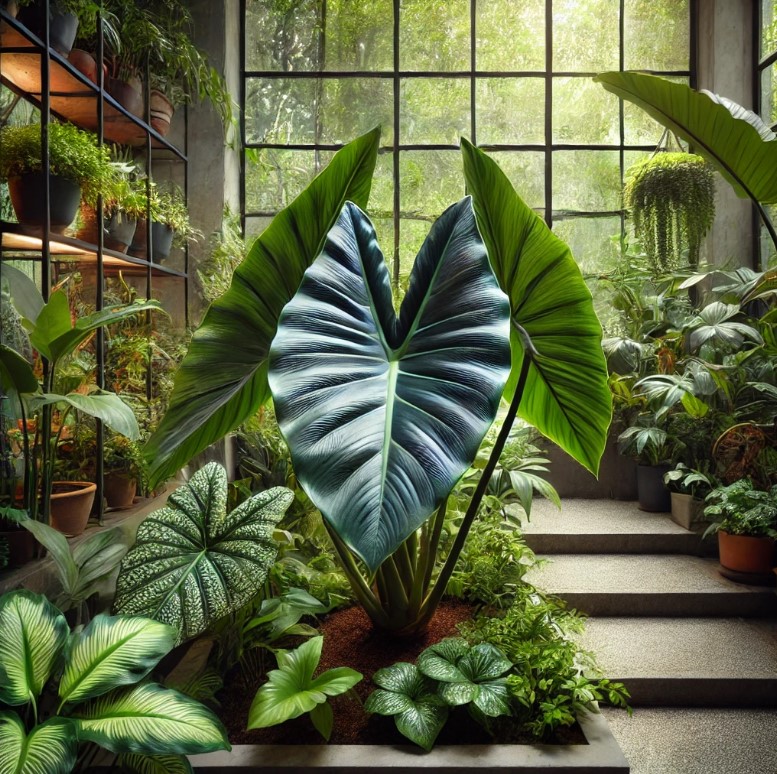The Plant I Chose — Alocasia CucullataOtherwise known as “Hooded Elephant Ear” (OKAY, of course that meant I had to choose this one!), it’s the foliage alone and those funky, uniquely shaped leaves made it a must-have. Strelitzia Nicolai makes a beautiful exotic house plant and brings the tropics indoors. But keeping Alocasia Cucullata alive is not a child game as it requires comprehension of the basic growing needs (light, water, humidity and soil type) to leave. We’ll lead you through every step of caring for this gorgeous plant to help guide you through choosing the right soil to common pests. Whether you are a beginner or an expert gardener, this complete care guide will help all the plant lovers like you with ways to keep Alocasia Cucullata perfect.
Learn About Alocasia Cucullata
The Alocasia Cucullata is native to Southeast Asia and has wide, arrow-shaped leaves with a distinctive shiny finish. Some of these plants are rather massive and will definitely add an element of boldness to the indoor gardens.
Choosing the Right Location
Light — Alocasia Cucullata love bright indirect light. If put directly in the sun, its leaves may get scorched and turn discolored. It is crucial that you position your plant somewhere with good light, but out of direct light.
Watering Alocasia Cucullata
Alocasia Cucullata need appropriate watering to thrive. Keep the soil moist but not soggy. Allow the first inch of soil to dry out before watering again to prevent root rot. Increase watering during the growing season, but water less in the winter when your plant goes dormant.
Best Type of Soil for Alocasia Cucullata
Soil: Alocasia Cucullata thrives when planted or potted in rich but well-draining, slightly acidic soil. A combination of potting soil with some perlite and peat moss added provides the right amount of moisture retention while still allowing for drainage. This prevents the roots from sitting in water, allowing for healthy root growth.
Humidity Requirements
As tropical plants, Alocasias do prefer high humidity. Try for well over 60% humidity. In case the air inside is particularly dry, you could use a humidifier or simply place the plant on a pebble tray with water to increase local humidity levels.
Temperature Considerations
Alocasia Cucullata Is Comfortable With 65°F – 75°F (18°C to24°C) Temperature. Do not keep your plant in draughts or close to airconditioning and heating systems, where sudden temperature changes can disrupt the plants.
Feeding in Alocasia Cucullata
Alocasia Cucullata thrives on frequent fertilization throughout the growing season (spring and summer). Every 2 to 4 weeks, feed your plant half-strength of a balanced, water-soluble fertilizer. Avoid fertilization in the winter, since the plant is dormant.
Repotting Alocasia Cucullata
Every 1–2 years, repot your Alocasia Cucullata to give it sufficient room for growing. Select a pot that is 1-2 inches wider than the existing pot. The roots are very sensitive so be careful with them.
Pruning Alocasia Cucullata
Get rid of yellow or damaged leaves to grow better. Make clean, precise cuts with a pair of scissors when cutting off the leaves without harming the plant. It prevents the plant from becoming leggy, but pruning also keeps it looking aesthetically pleasing.
Common Problems and Solutions
Alocasia Cucullata may face a few problems that include yellowing leaves, root rot, and pest infestation like spider mites or aphids. Learning how to deal with these problems early on avoids that its effects deepen. Below you will find some common solutions:
Leaves Yellowing: This can be a sign of either overwatering or underwatering. Test the soil for moisture to set your watering schedule.
Root Rot: Assuming there is good drainage in the soil and not allowing the plant to sit in standing water (too long).
Pests: Check the leaves and stems frequently for pests. Treat infestations with either insecticidal soap or neem oil.
How To Propagate Cucullata Alocasia
To propagate an Alocasia Cucullata you are able to divide it. When the plant is repotted, divide each one into several smaller sections so that each has some of the root system. Pot them in new pots with fresh soil and treat them as a mature plant.
Indoor Advantages of Alocasia Cucullata
If you like the plant, Alocasia Cucullata is a terrific indoor plant with its attractive leaves and air purification property. But this beautiful greenery can bring a lush exotic feel to your home.
Alocasia Cucullata Common Misconceptions
Alocasia Cucullata have a couple of common myths, though. They also don’t need to be watered all the time, which is something that people commonly get wrong. Just water accordingly and drain properly, the plant will be healthy.
Companion plants of Alocasia Cucullata
You may also want to keep your Alocasia Cucullata company with other tropical plants such as ferns, philodendrons, or peace lilies. They all have similar care needs, and combined these make the perfect indoor jungle.
Where to Get Alocasia Cucullata
You can get it from¿specialized nurseries, local garden centers and some online plant retailers. If you decide to buy online, then make sure that you are buying from a reputable seller so your plant is actually healthy.
Conclusion
Growing Alocasia Cucullata is not something any indoors gardener would regret doing. Following the steps in this guide will help you keep your plant happy and healthy while making it a key feature Piece in your home. Just be sure to give it the proper light, water, soil and humidity—it will reward you with years of lovely, draping leaves!
